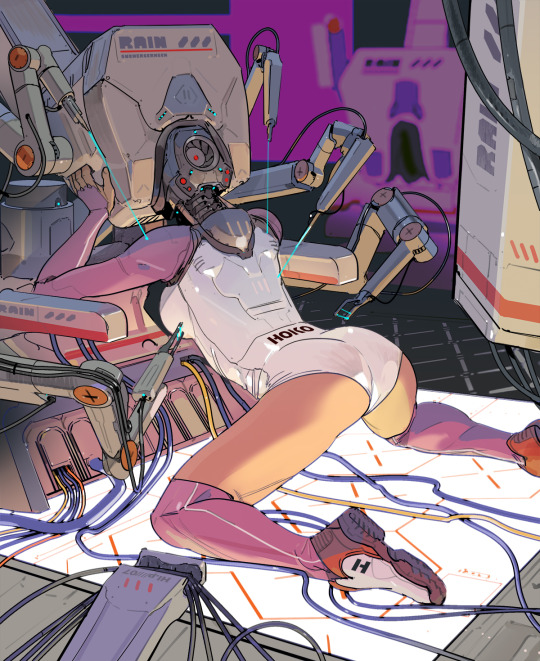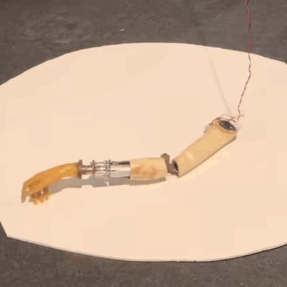#automation robotics
Explore tagged Tumblr posts
Text
5 Arduino Courses for Beginners
Robotics, automation, and do-it-yourself electronics projects have all been transformed by Arduino, an open-source electronics platform. Entering the world of Arduino may seem intimidating to novices, but the correct course may make learning easier and more fun.
Arduino Step-by-Step: Getting Started (Udemy)
This extensive Udemy course is designed for complete novices. It provides an overview of Arduino's fundamentals, describing how the platform functions and assisting students with easy tasks like using sensors and manipulating LEDs.
Key Highlights:
thorough explanations for novices.
practical projects with practical uses.
instructions for configuring and debugging your Arduino board.
Introduction to Arduino (Coursera)
The main objective of this course is to introduce Arduino programming with the Arduino IDE. It goes over the fundamentals of circuits, programming, and connecting various parts, such as motors and sensors.
Key Highlights:
instructed by academics from universities.
access to a certificate of completion and graded assignments.
Concepts are explained in length but in a beginner-friendly manner.
Arduino for Absolute Beginners (Skillshare)
For those who want a quick introduction to Arduino, this brief project-based course is perfect. You'll discover how to configure and program your Arduino board to produce interactive projects.
Key Highlights:
teachings in bite-sized chunks for speedy learning.
simple projects for beginners, such as sound sensors and traffic light simulations.
Peer support and community conversations.
Exploring Arduino: Tools and Techniques for Engineering Wizardry (LinkedIn Learning)
This course delves deeply into Arduino programming and hardware integration, drawing inspiration from Jeremy Blum's well-known book. It is intended to provide you with the skills and resources you need to produce complex projects.
Key Highlights:
advice on creating unique circuits.
combining displays, motors, and sensors.
Code optimization and debugging best practices.
Arduino Programming and Hardware Fundamentals with Hackster (EdX)
This course, which is being offered in partnership with Hackster.io, covers the basics of Arduino hardware and programming. You may experiment with real-world applications because it is project-based.
Key Highlights:
Course materials are freely accessible (certification is optional).
extensive robotics and Internet of Things projects.
interaction with teachers and other students in the community.
Arduino is a great place to start if you want to construct a robot, make a smart home gadget, or just pick up a new skill. The aforementioned courses accommodate a variety of learning preferences and speeds, so every novice can discover the ideal fit. Select a course, acquire an Arduino starter kit, and set out on an exciting adventure into programming and electronics!
To know more, click here.
2 notes
·
View notes
Text
Industrial Robotics Market to be Worth $37.1 Billion by 2031

Meticulous Research®—a leading global market research company, published a research report titled ‘Industrial Robotics Market—Global Opportunity Analysis and Industry Forecast (2024-2031)’. According to this latest publication, the industrial robotics market is projected to reach $37.1 billion by 2031, at a CAGR of 6.8% from 2024–2031.
The industrial robotics market is experiencing growth due to government support encouraging the adoption of industrial robots and the increasing use of robots in the manufacturing sector. However, market growth is hindered by high initial investment requirements and performance issues with robots.
In addition, the increasing automation across the automotive and electronics sectors and the rising focus on reducing human labor across industries are potential growth opportunities for market players. The market faces substantial challenges, including a lack of skilled professionals and safety issues with robots while working with other industrial systems.
Furthermore, the surging adoption of IoT technology for remote monitoring and control of robotic systems and the growing use of human-robot collaboration to automate tasks are prominent trends in the industrial robotics market.
Key Players:
The industrial robotics market is characterized by a moderately competitive scenario due to the presence of many large- and small-sized global, regional, and local players. The key players operating in the industrial robotics market are ABB Ltd (Switzerland), Fanuc Corporation (Japan), YASKAWA Electric Corporation (Japan), KUKA AG (Germany), Mitsubishi Electric Corporation (Japan), Kawasaki Heavy Industries, Ltd. (Japan), Universal Robots A/S (A Part of Teradyne Inc,) (Denmark), Stäubli International AG (Switzerland), Techman Robot Inc (Taiwan), Denso Corporation (Japan), OMRON Corporation (Japan), HD Hyundai Co Ltd (South Korea), Bosch Rexroth AG (A Part of Robert Bosch GmbH) (Germany), Seiko Epson Corporation (Japan), Dürr Aktiengesellschaft (Germany), Comau S.p.A. (Italy), F&P Robotics AG (Switzerland), and Franka Robotics GmbH (Germany).
The industrial robotics market is segmented based on component, payload, application, and end-use industry. The report also evaluates industry competitors and analyzes the industrial robotics market at the regional and country levels.
Among the components studied in this report, the robots segment is anticipated to dominate the industrial robotics market in 2024. The widespread adoption of robots by consumers is driving the expansion of their application across various industries. Robots are increasingly utilized to perform repetitive and hazardous tasks with consistent precision, accuracy, and quality. Key factors contributing to the segment's dominant position in the industrial robotics market include the growing demand for robots to enhance workplace safety, reduce labor costs, improve productivity and profitability, and minimize the risk of physical injury by reducing reliance on human labor for potentially dangerous activities.
Among the payload studied in this report, the up to 60 kg segment is anticipated to dominate the industrial robotics market in 2024. The rising demand for robots with payload capacities of up to 60 kg, driven by increased automation in the electrical and electronics industries for assembly and handling applications, is a key factor in the growth of this segment. Additionally, the widespread adoption of these robots across diverse sectors, including automotive, electronics, logistics, food, pharmaceuticals, and cosmetics, further strengthens their dominant position in the industrial robotics market.
Among the applications studied in this report, the material handling segment is anticipated to dominate the industrial robotics market in 2024. The growing adoption of material handling robots to automate repetitive, labor-intensive, and hazardous tasks on production lines is a key factor driving the growth of this segment. Additionally, the rising demand for material handling robots to enhance production line efficiency and improve customer satisfaction by ensuring timely delivery of high-quality products further contributes to the segment's dominant position in the industrial robotics market.
Among the end-use industries studied in this report, the automotive segment is anticipated to dominate the industrial robotics market in 2024. The growing adoption of robotics in the automotive industry is driven by manufacturers' need to accelerate production, reduce costs, enhance quality, and ensure worker safety. Key benefits offered by industrial robots in this sector—including cost-effectiveness, improved efficiency, enhanced safety, and increased speed and precision—are significant factors contributing to the segment’s dominant position in the industrial robotics market.
Geographic Review
This research report analyzes major geographies and provides a comprehensive analysis of Asia-Pacific (China, Japan, South Korea, Taiwan, Singapore, India, Thailand, Australia & New Zealand, Indonesia, and Rest of Asia-Pacific), Europe (Germany, Italy, Sweden, France, Austria, Denmark, Spain, Netherlands, Norway, U.K., and Rest of Europe), North America (U.S. and Canada), Latin America (Mexico, Brazil, and Rest of Latin America), and Middle East & Africa (UAE, Israel, Saudi Arabia, and Rest of Middle East & Africa).
Asia-Pacific is anticipated to dominate the industrial robotics market in 2024. The widespread adoption of robotics in the region is driven by rising labor costs and the increasing need for manufacturers to automate production processes to manage cost expenses effectively. Additionally, the growing demand for robotics, fueled by the rapid development of industries such as automotive, electronics, consumer goods, and pharmaceuticals, is a key factor contributing to the region's dominant position in the industrial robotics market.
Download Sample Report Here @ https://www.meticulousresearch.com/download-sample-report/cp_id=5278
Key Questions Answered in the Report-
What is the value of revenue generated by the sale component, payload, application, and end-use industry?
At what rate is the global demand for industrial robotics projected to grow for the next five to seven years?
What is the historical market size and growth rate for the industrial robotics market?
What are the major factors impacting the growth of this market at global and regional levels?
What are the major opportunities for existing players and new entrants in the market?
Which offering segments create major traction in this market?
What are the key geographical trends in this market? Which regions/countries are expected to offer significant growth opportunities for the manufacturers operating in the h industrial robotics market?
Who are the major players in the industrial robotics market? What are their specific product offerings in this market?
What recent developments have taken place in the industrial robotics market? What impact have these strategic developments created on the market?
Contact Us: Meticulous Research® Email- [email protected] Contact Sales- +1-646-781-8004 Connect with us on LinkedIn- https://www.linkedin.com/company/meticulous-research
#Industrial Robots Market#SCARA Robot#Robotics Technology#Robotics and Automation Engineering#Palletizing Robot#Manufacturing Robots#Automation Robotics
0 notes
Text
Streamlining Efficiency: The Role of Process Automation and Robotics in Modern Business
In the fast-paced world of modern business, staying ahead of the competition requires organizations to constantly seek innovative solutions to enhance efficiency and productivity. One such transformative force is process automation and robotics, which are revolutionizing industries by automating mundane tasks and optimizing workflows. This article explores the significance of process automation and robotics in streamlining operations, improving accuracy, and fostering innovation.
The Rise of Process Automation:
Process automation involves the use of technology to execute recurring tasks or processes without human intervention. This can range from simple rule-based tasks to complex workflows that integrate multiple systems. The primary goal is to increase operational efficiency, reduce errors, and free up human resources for more creative and strategic endeavors.
Enhanced Efficiency: Automated processes eliminate the delays associated with manual intervention, leading to faster task completion. Repetitive tasks that once consumed valuable time can now be executed seamlessly, allowing employees to focus on higher-value activities that require critical thinking and creativity.
Error Reduction: Human errors are inevitable, especially in repetitive tasks. Process automation significantly reduces the likelihood of errors, ensuring consistent and accurate results. This is crucial in industries such as finance, healthcare, and manufacturing, where precision is paramount.
Cost Savings: By automating routine tasks, organizations can achieve substantial cost savings in terms of time and resources. Automated processes operate 24/7 without breaks, leading to increased productivity and, ultimately, reduced operational costs.
The Role of Robotics in Automation:
Robotics takes process automation a step further by introducing physical entities that can perform tasks in the real world. Robotic Process Automation (RPA) involves the use of software robots or "bots" to emulate human interactions with digital systems, while traditional robotics involves the use of physical robots to perform tasks in the physical world.
Increased Flexibility: Unlike fixed machinery, robots can be programmed to adapt to different tasks and processes. This flexibility allows organizations to respond quickly to changing market demands and customize robotic solutions to fit specific needs.
Human-Robot Collaboration: Collaborative robots, or cobots, are designed to work alongside humans, enhancing teamwork and productivity. In manufacturing, for example, cobots can assist with repetitive or physically demanding tasks, freeing human workers to focus on tasks that require creativity and problem-solving.
Improved Safety: Robots excel in performing tasks in hazardous environments, reducing the risk of injuries to human workers. From handling dangerous materials to working in extreme conditions, robots contribute to creating safer workplaces.
Challenges and Considerations:
While the benefits of process automation and robotics are evident, organizations must navigate potential challenges:
Integration Complexity: Implementing automation solutions may require integrating new technologies with existing systems. This process can be complex and necessitates careful planning to ensure a smooth transition.
Workforce Adaptation: As automation takes over routine tasks, there is a need for upskilling the workforce to manage and maintain automated systems. This adaptation ensures that employees remain valuable contributors to the organization.
Ethical Considerations: The widespread adoption of automation prompts ethical considerations, particularly related to job displacement and the impact on employment. Striking a balance between automation and maintaining a skilled workforce is crucial.
Conclusion:
Process automation and robotics are transforming the way businesses operate, offering unparalleled efficiency, accuracy, and innovation. Embracing these technologies allows organizations to unlock new levels of productivity, remain competitive, and position themselves for future success. While challenges exist, the benefits far outweigh the drawbacks, making process automation and robotics integral components of the modern business landscape.
#automation robotics#robotic process automation companies#industrial robotic automation#rpa robotic process automation#robotics and automation
0 notes
Text

Whispering secret data.
#lab#machine#automation#robotics#cyberpunk#retro#scifi#stuck#laboratory#farm#android#cyborg#data#secret#whisper#illustration#drawing#digitalartwork#digitaldrawing#digitalart#digitalillustration#90s#cables#machinelearning#connection#ring#runner#net#flesh
5K notes
·
View notes
Text

Your summer reading list: An Introduction to Cybernetics. W. Ross Ashby - 1963.
#vintage illustration#vintage books#books#reading lists#book covers#paperbacks#vintage paperbacks#books and reading#summer reading#nonfiction#non fiction#science#science books#the sciences#cybernetics#robotics#automation#tech#technology#artificial intelligence#ai
456 notes
·
View notes
Text
Rahhhh finished this thing that’s been in wip for a few months

One of 2 of my flightrising dragons who are automatons (they are identical except their magic/flight)
#myart#flight rising#flight rising fanart#flight rising ridgeback#dragon#fr fanart#fr ridgeback#automation#machine#robot
680 notes
·
View notes
Text

Allow yourselves to believe that anything can be possible.
#a.b.e.l#divine machinery#archangel#automated#behavioral#ecosystem#learning#divine#machinery#ai#artificial intelligence#angels#guardian angel#angel#robot#computer#computer boy#cogito ergo sum#sentient objects#sentient ai
322 notes
·
View notes
Text
We ask your questions so you don’t have to! Submit your questions to have them posted anonymously as polls.
#polls#incognito polls#anonymous#tumblr polls#tumblr users#questions#polls about jobs#submitted june 3#work#robots#ai#automation#jobs
393 notes
·
View notes
Text

Häagen-Bot.
And more robots.
675 notes
·
View notes
Text
"The Writing Boy"

In 1774 AD, during the reign of Louis XVI (1754-1793), Swiss watchmaker Pierre Jacques Dro (1721-1790) unveiled a remarkable engineering feat that would go down in history as the world's first android or programmed automaton.
Known as "The Writing Boy," this creation appeared at first glance to be a simple wooden doll with a porcelain head, barefoot, and holding a goose feather.
But hidden within this seemingly ordinary toy was a technological marvel, a writing mechanism powered by 6,000 intricate moving parts, making it the first automatic calligrapher.
"The Writing Boy" was a groundbreaking achievement, as it was capable of writing complex sentences, such as "My inventor is Jacques Dro."
The automaton was a product of 20 months of meticulous work by Pierre Jacques Dro, and its debut in Paris stunned the court of King Louis XVI.
The android's ability to perform such an intricate task showcased the high level of craftsmanship and innovation of the time.
This astonishing creation marked a significant milestone in the history of robotics and engineering.
Not only was it the world’s first programmed android, but it also demonstrated the potential of machines to replicate human actions.
"The Writing Boy" paved the way for future advancements in automation, solidifying Pierre Jacques Dro’s legacy as a pioneer in the field of robotics.
#Pierre Jacques Dro#Louis XVI#The Writing Boy#first android#android#programmed automaton#automaton#writing mechanism#technological marvel#robotics#engineering#wooden doll#craftsmanship#innovation#machine#automation#1700s#18th century#Swiss watchmaker#automatic calligrapher
151 notes
·
View notes
Text





⚙️ | automatons
#stim#stimmy#gif#stimboard#stimblr#gifs#gifset#machinery#machine#automatons#automation#robot#robots#mechanics#mechanical#mechanisms#art
103 notes
·
View notes
Text
Automation & Robotics Course in Dubai
Robotics and automation are becoming the mainstays of technological innovation. For those who want to succeed in these disciplines, Dubai, which is renowned for its progressive outlook and dedication to becoming a global tech hub, has chances that are unmatched. A promising future can be paved with an automation and robotics degree in Dubai, which boasts a booming IT sector and state-of-the-art infrastructure.
Why Choose Dubai for Automation and Robotics?
Dubai has become a global leader in innovation and technology. The city's emphasis on technology development, from smart city projects to AI-powered solutions, provides a strong foundation for future automation and robotics specialists.
Course Highlights
An overview of robotic systems, their parts, and their capabilities is provided in Fundamentals of Robotics.
Programming for Automation: Practical instruction in programming languages used in automation systems, such as Python, C++, and Java.
Machine learning and artificial intelligence: incorporating AI with robotics to facilitate intelligent decision-making.
Knowing the function of sensors, actuators, and controllers in automated systems is essential.
Practical Training: Building and programming robots is a common component of lab sessions and projects in many courses.
Projects provide you the chance to work on practical issues while demonstrating your abilities to prospective employers.
Career Prospects After the Course
Designing and putting into place automated manufacturing systems is known as industrial automation.
Healthcare: Creating robotic systems for patient care, rehabilitation, and surgery.
Supply chain and logistics: developing automated systems for transportation and inventory control.
Developing robotic applications and AI-powered infrastructure for urban living is known as "smart cities."
Research and Education: Supporting the development of automation and robotics technology.
More than just education, enrolling in an automation and robotics course in Dubai is an investment in a technologically and innovatively driven future. Dubai is the ideal location to begin your automation and robotics adventure because of its top-notch facilities, industry collaborations, and plethora of professional prospects. In one of the world's most vibrant cities, embrace the future and realize your full potential.
To know more, click here.
0 notes
Text
Industrial Robotics Market to be Worth $37.1 Billion by 2031

Meticulous Research®—a leading global market research company, published a research report titled ‘Industrial Robotics Market—Global Opportunity Analysis and Industry Forecast (2024-2031)’. According to this latest publication, the industrial robotics market is projected to reach $37.1 billion by 2031, at a CAGR of 6.8% from 2024–2031.
The industrial robotics market is experiencing growth due to government support encouraging the adoption of industrial robots and the increasing use of robots in the manufacturing sector. However, market growth is hindered by high initial investment requirements and performance issues with robots.
In addition, the increasing automation across the automotive and electronics sectors and the rising focus on reducing human labor across industries are potential growth opportunities for market players. The market faces substantial challenges, including a lack of skilled professionals and safety issues with robots while working with other industrial systems.
Furthermore, the surging adoption of IoT technology for remote monitoring and control of robotic systems and the growing use of human-robot collaboration to automate tasks are prominent trends in the industrial robotics market.
Key Players:
The industrial robotics market is characterized by a moderately competitive scenario due to the presence of many large- and small-sized global, regional, and local players. The key players operating in the industrial robotics market are ABB Ltd (Switzerland), Fanuc Corporation (Japan), YASKAWA Electric Corporation (Japan), KUKA AG (Germany), Mitsubishi Electric Corporation (Japan), Kawasaki Heavy Industries, Ltd. (Japan), Universal Robots A/S (A Part of Teradyne Inc,) (Denmark), Stäubli International AG (Switzerland), Techman Robot Inc (Taiwan), Denso Corporation (Japan), OMRON Corporation (Japan), HD Hyundai Co Ltd (South Korea), Bosch Rexroth AG (A Part of Robert Bosch GmbH) (Germany), Seiko Epson Corporation (Japan), Dürr Aktiengesellschaft (Germany), Comau S.p.A. (Italy), F&P Robotics AG (Switzerland), and Franka Robotics GmbH (Germany).
The industrial robotics market is segmented based on component, payload, application, and end-use industry. The report also evaluates industry competitors and analyzes the industrial robotics market at the regional and country levels.
Among the components studied in this report, the robots segment is anticipated to dominate the industrial robotics market in 2024. The widespread adoption of robots by consumers is driving the expansion of their application across various industries. Robots are increasingly utilized to perform repetitive and hazardous tasks with consistent precision, accuracy, and quality. Key factors contributing to the segment's dominant position in the industrial robotics market include the growing demand for robots to enhance workplace safety, reduce labor costs, improve productivity and profitability, and minimize the risk of physical injury by reducing reliance on human labor for potentially dangerous activities.
Among the payload studied in this report, the up to 60 kg segment is anticipated to dominate the industrial robotics market in 2024. The rising demand for robots with payload capacities of up to 60 kg, driven by increased automation in the electrical and electronics industries for assembly and handling applications, is a key factor in the growth of this segment. Additionally, the widespread adoption of these robots across diverse sectors, including automotive, electronics, logistics, food, pharmaceuticals, and cosmetics, further strengthens their dominant position in the industrial robotics market.
Among the applications studied in this report, the material handling segment is anticipated to dominate the industrial robotics market in 2024. The growing adoption of material handling robots to automate repetitive, labor-intensive, and hazardous tasks on production lines is a key factor driving the growth of this segment. Additionally, the rising demand for material handling robots to enhance production line efficiency and improve customer satisfaction by ensuring timely delivery of high-quality products further contributes to the segment's dominant position in the industrial robotics market.
Among the end-use industries studied in this report, the automotive segment is anticipated to dominate the industrial robotics market in 2024. The growing adoption of robotics in the automotive industry is driven by manufacturers' need to accelerate production, reduce costs, enhance quality, and ensure worker safety. Key benefits offered by industrial robots in this sector—including cost-effectiveness, improved efficiency, enhanced safety, and increased speed and precision—are significant factors contributing to the segment’s dominant position in the industrial robotics market.
Geographic Review
This research report analyzes major geographies and provides a comprehensive analysis of Asia-Pacific (China, Japan, South Korea, Taiwan, Singapore, India, Thailand, Australia & New Zealand, Indonesia, and Rest of Asia-Pacific), Europe (Germany, Italy, Sweden, France, Austria, Denmark, Spain, Netherlands, Norway, U.K., and Rest of Europe), North America (U.S. and Canada), Latin America (Mexico, Brazil, and Rest of Latin America), and Middle East & Africa (UAE, Israel, Saudi Arabia, and Rest of Middle East & Africa).
Asia-Pacific is anticipated to dominate the industrial robotics market in 2024. The widespread adoption of robotics in the region is driven by rising labor costs and the increasing need for manufacturers to automate production processes to manage cost expenses effectively. Additionally, the growing demand for robotics, fueled by the rapid development of industries such as automotive, electronics, consumer goods, and pharmaceuticals, is a key factor contributing to the region's dominant position in the industrial robotics market.
Download Sample Report Here @ https://www.meticulousresearch.com/download-sample-report/cp_id=5278
Key Questions Answered in the Report-
What is the value of revenue generated by the sale component, payload, application, and end-use industry?
At what rate is the global demand for industrial robotics projected to grow for the next five to seven years?
What is the historical market size and growth rate for the industrial robotics market?
What are the major factors impacting the growth of this market at global and regional levels?
What are the major opportunities for existing players and new entrants in the market?
Which offering segments create major traction in this market?
What are the key geographical trends in this market? Which regions/countries are expected to offer significant growth opportunities for the manufacturers operating in the h industrial robotics market?
Who are the major players in the industrial robotics market? What are their specific product offerings in this market?
What recent developments have taken place in the industrial robotics market? What impact have these strategic developments created on the market?
Contact Us: Meticulous Research® Email- [email protected] Contact Sales- +1-646-781-8004 Connect with us on LinkedIn- https://www.linkedin.com/company/meticulous-research
#Industrial Robots Market#SCARA Robot#Robotics Technology#Robotics and Automation Engineering#Palletizing Robot#Manufacturing Robots#Automation Robotics
0 notes
Text
no context provided other than that knight rider is taking over my psyche at insane speeds

#knight rider#kitt#knight industries two thousand#knight automated roving robot#karr#noctiris draws#michael knight#garthe knight#i guess lmao#queue continuum
49 notes
·
View notes
Text

Traffic-light experts
#robots#ai#automation#insidesjoke#tech#coding#science#memes#meme#dank memes#reddit memes#funny#relatable#comedy#humour#humour blog
120 notes
·
View notes
